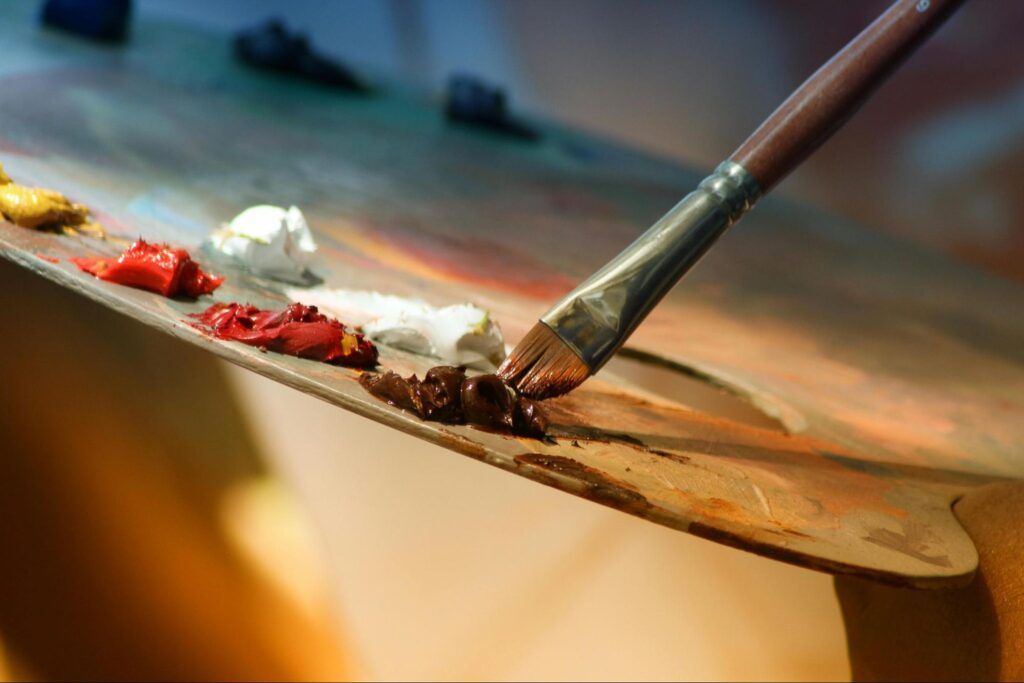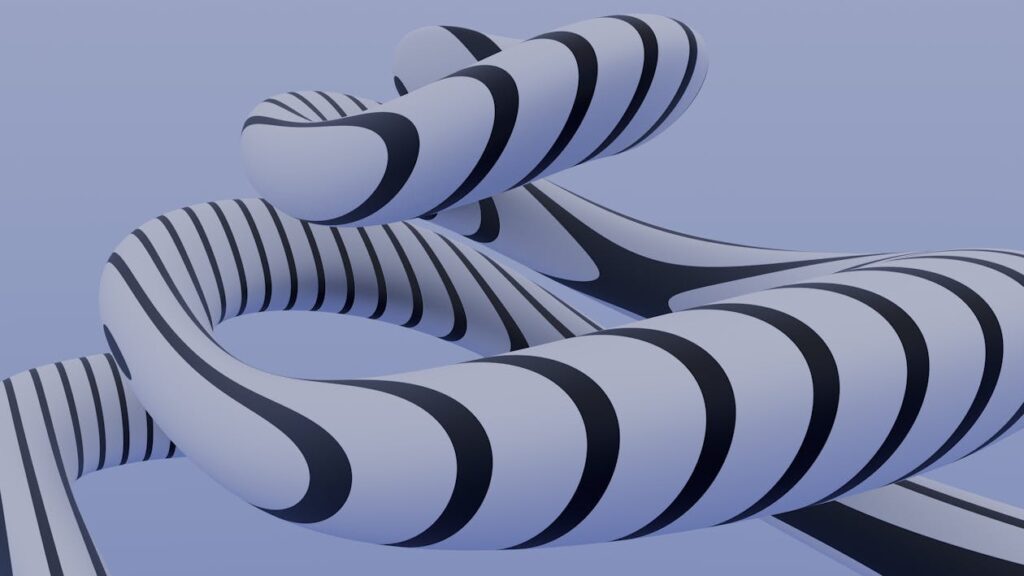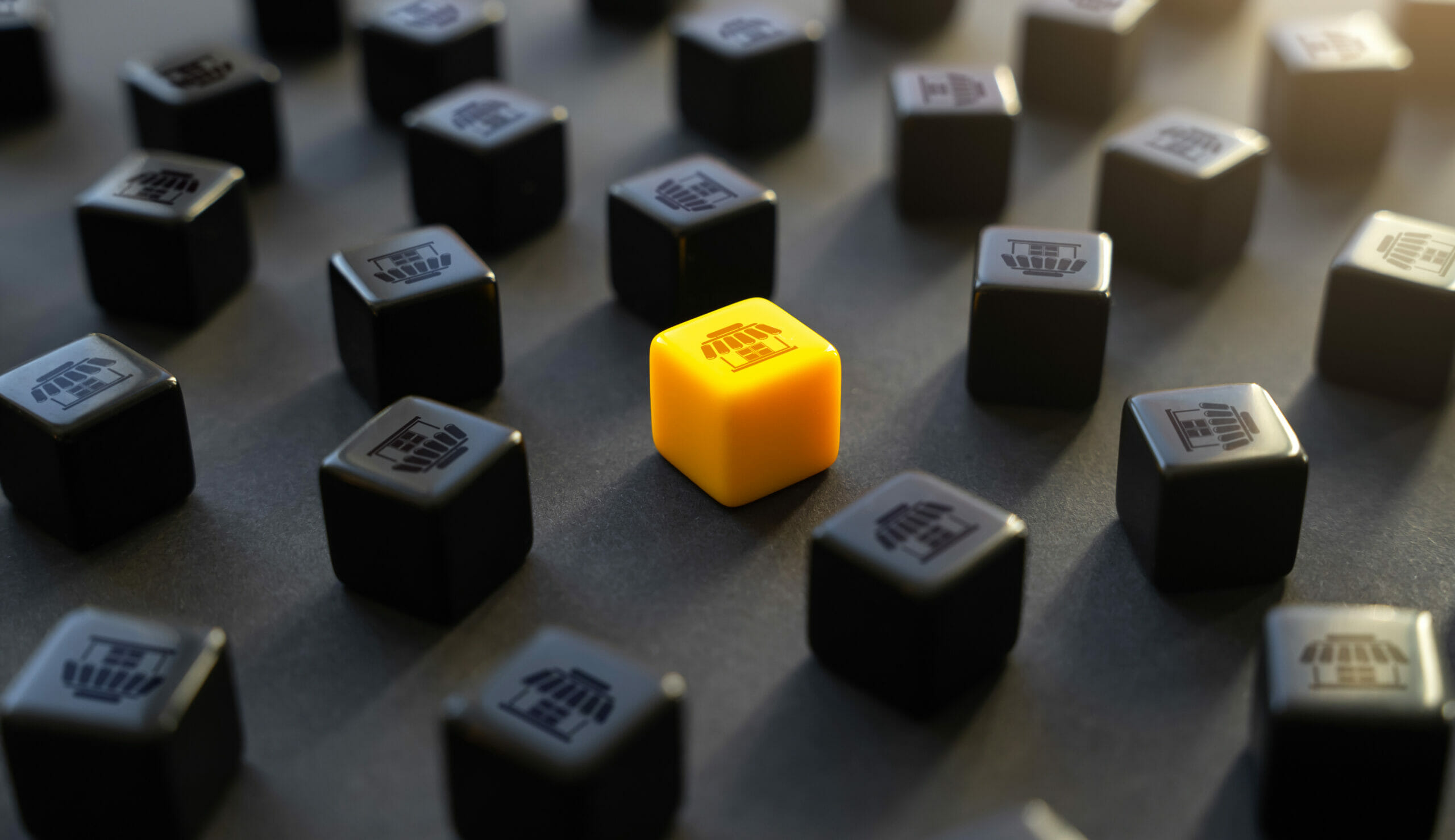In order to build a strong product, product managers, product marketers and product designers work together, but we also see increasingly more demand for product managers, who are either knowledgeable in software development or design. Understanding the basics of good design and UI UX can be a great way to expand your skill set and stand out as a product manager. In the following article, we’ll dive into some basic design principles.

Paintbrush Photography (Image: Daian Gan on pexels.com)
Product managers serve as a bridge between different disciplines within a company. They translate business objectives into actionable design or engineering requirements and balance user needs with technical feasibility. They collaborate with design and engineering, but also with marketing, sales, customer support and other teams depending on the set-up of the company.
Collaborating effectively with designers requires understanding their workflows, goals and terminology. Product managers need to grasp key design concepts such as wireframes, mockups and design systems. These are crucial for clear communication and alignment between teams. By actively engaging in design discussions, Product Managers can ensure their insights contribute to refining user-centered designs while maintaining the product’s overall vision.
On the very basic level UI (user interface) design focuses on the visual elements of a product: buttons, colors, typography and layout. UX (user experience) design covers the entire user journey and addresses functionality, flow, accessibility and emotional impact.
UI and UX are critical for user satisfaction and retention and can even break or make a product’s success. Creating a thoughtfully designed product ensures that the user can enjoy a seamless, engaging and intuitive experience, reducing frustration and churn. As such, product managers should take design choices carefully into consideration and not dismiss it as just “prettying” the product up, instead they should carefully align them with the user’s needs and the overall business objectives.

(Image: Steve Johnson on pexels.com)
Gathering user insights is essential to the development of a great product and so is it for the development of outstanding user experiences. Interviews, surveys, focus groups and so on provide them with key insights. Sounds a bit like what product managers are doing? Well, the overlap between product design and product management might be bigger than you think! Just like product managers are thinking about personas and user journeys, product designers have to follow a similar train of thought to understand what design resonates with their target group. Lastly, usability testing allows us to test prototypes with real users to validate design decisions.
Design is often seen as a matter of personal taste, however there are certain principles that do to some degree objectively define what is considered good design and what isn’t:
Now what is considered good design, which principles are emphasized and used, differs from country to country. What is considered good design in one country, might not be considered good design in another and vice versa. Based on my personal opinion, the difference between bad design and good design is that good design doesn’t need an explanation. It’s easy to understand. It’s obvious. The difference between good design and great design is that great design is an experience. It’s memorable and everything feels natural. Good design is easy to understand, easy and fun to use and it fulfills the user needs and follows the basic design principles. Great design tells a story, it is an experience from start to finish and every part of it feels natural. Great design isn’t afraid to reinvent.
As part of understanding product designers better, it makes sense to dive into the design process. One potential process to design is this:
Product designers need to grasp the landscape first: understand the market, competitors and users. This enables them to create targeted ideas. Considering this, it becomes clear that there are plenty of similarities between product management and product design during the beginning of the process.
In order to then come up with a design solution, they organize information (information architecture), draft the user’s path (user flows), create sketches (wireframes), as well as finished designs (mockups) and prototypes,
Product designers use tools such as Figma, Adobe XD and Sketch among others to create user flows, wireframes, mockups and prototypes and collaborate with other designers. Gaining design skills as a product manager is incredibly helpful as it allows you to directly visualize your ideas and streamline collaboration with product designers. After all, it is always easier to understand and communicate ideas, when you have a visualization of them. Discussing your ideas with product designers and other team members will become much easier and ultimately the designer can take your ideas to the next level design wise.

Women next to pin board (Image: Fauxels on pexels.com)
Taking a proactive approach allows you to build trust and maintain respect. By involving designers early on during the product development process product managers create a shared vision from the get go, allowing them to lay the knowledge foundation on business objectives, user needs and technical constraints. Product designers need to understand these to create the most effective solutions. Simply telling them to design something, without providing this context restricts their range of motion and results in a lower quality solution.
Communication is crucial throughout the process. Discussing the progress and addressing feedback allows you to ensure alignment. Make sure to actively listen to designers’ perspectives, instead of simply demanding something to be designed. By acknowledging their expertise and sharing insights you give them the space needed to come up with creative solutions. Additionally, you should stay transparent about priorities and trade-offs, as well as how certain design ideas align or don’t align with the business goals. This creates a shared understanding and ensures that everyone is working towards the same objective, while feeling that their work is being considered and respected.
Additionally, it is important to stay open minded about change requests. Respecting the product designers expertise, enabling them to come up with results on their own and discussing said results together, creates an environment of transparency, collaboration, respect and as a result, products of a higher quality.
And as always, make sure to celebrate successes together. Acknowledge the contributions of the design time, just like you’d do with engineering and enjoy the important milestones together.
Take the time to understand the principles and explore common tools such as Figma or Sketch to better understand these principles and concepts. This is not about becoming a great designer, it's just about gaining a better understanding of how product design, its tools and processes work to improve your ability to collaborate. Try to build your own user flows, wireframes, mockups and prototypes over a couple of weekends to deepen your experience and learnings.
If you’re looking to deepen your understanding, consider enrolling in courses to gain more comprehensive insights. I consider the Google UX course a great option, since it covers the essentials in a comprehensive and practical way, allowing you to apply your skills immediately. Building this knowledge base will help you improve your ability to lead cross-functional teams, but also helps you highlight your ability to take a user centric approach.
By proactively seeking out opportunities to collaborate with design teams, you can further strengthen your skill set and ensure that teams stay aligned throughout the entire development process.
Understanding product design fundamentals is no longer optional for product managers; it’s a critical skill for effective collaboration and product success. By grasping essential design principles, engaging proactively with design teams, and learning to navigate common tools and processes, product managers can bridge the gap between business objectives and user needs. This alignment ensures that products not only meet functional requirements but also deliver exceptional user experiences. Developing these skills not only enhances your role as a product manager but also helps create a more cohesive and efficient product development process, resulting in products that stand out in the market.







